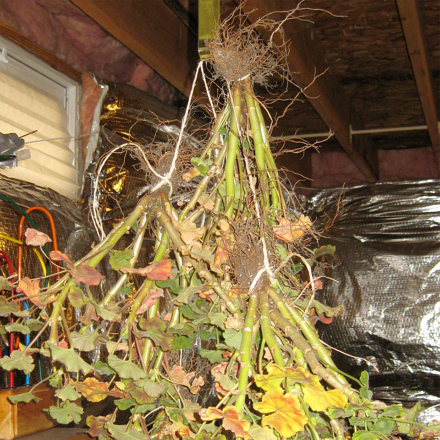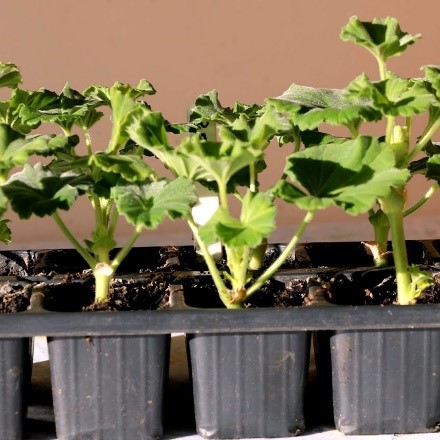Preserving Timeless Beauty
- 2022-11-06
- By mkirk
- Posted in Horticulture, The Garden Buzz
By Judy Cale, Colorado Master Gardener

Geraniums are associated with happiness, health and friendliness. This symbolism has made them a common housewarming gift and a beloved plant of timeless beauty that adds vibrant colors to any garden. Did you think that geraniums were just an annual plant? Well, I did. But they are actually perennials and can survive our winters if you place them indoors before the first frost. Are they worth preserving for the next year? You decide.
There are three different methods to overwinter geraniums. The easiest way is to bring the entire plant with its pot indoors. Place it by a bright window or under fluorescent lights for at least 10 hours daily, cut back the stems about one-third to one-half of their current height, and water it about once every 2 weeks. The temperature by the window should be about 65-70 degrees in the daytime and about 10 degrees cooler at night. One drawback: There may be insects such as fungus gnats in the pot’s soil that can become a nuisance in the home. It may be wise to replant geraniums in 6–8-inch pots with new potting soil. If a heated garage is available with bright light, that is another easy option.

Another method is inducing the geraniums to become dormant. This takes more effort than just bringing pots indoors. First, remove most of the soil from the geranium’s root ball. Second, hang the plant upside-down in a room which has a continuous temperature of about 50 degrees—such as a basement or garage. On a monthly basis, soak the roots in water for about one hour and then rehang the plant. The geranium will lose all its leaves, but know the plant is doing fine if stems are still green. Toward the end of May, when all danger of frost is over, remove dead foliage, replant the geranium, and it will revive itself!

A third technique is using 3–4-inch stem cuttings from the geraniums. The benefit of this method is that you can sprout multiple plants from one geranium. However, this takes more time, effort, and costs extra money. After cutting, remove any leaves from the bottom half of each cutting. Dip each cutting in rooting hormone, then insert each cutting into a small pot filled with vermiculite or a mixture of perlite and sphagnum peat moss. Ensure that cuttings can stand on their own. Water them and allow them to drain. Place a clear plastic bag over each cutting in bright, indirect light. This acts as a mini-greenhouse because cuttings root best in a moist, humid environment. After 6-8 weeks, roots will be about one inch long, and cuttings can be transplanted into 3–4-inch containers with well-drained potting soil. Place them in a cool, sunny location until all chances of frost have passed. Replant them in the garden where they will bring you gorgeous blooms!
Read more about preserving these timeless beauties at the University of Minnesota Extension and CSU Co-Horts Blog.
Horticulture Resources
- Garden Buzz Archives
- CSU Extension Resources
- Colorado Master Gardener Program
- Foothills to Plains Native Plant Master Program
- Native Bee Watch Community Science Program
- The Co-Hort Blog
- PlantTalk Colorado
- Soil Testing
- Plant Select
- Emerald Ash Borer
- Japanese Beetle
- Colorado State Forest Service
- Ask an Expert


